
Smart Light Sydney
Text & images:/ Zac Shenker
Billed as a celebration of light art, music and ideas, Smart Light Sydney was intended to promote energy savings in lighting, best practices in design and a reduction of obtrusive light into the night atmosphere. Exactly how these lofty ideals were intended to be achieved in a project that added even more lights to an energy hungry city, and then attracted more people to travel into the city to participate, isn’t explained in their manifesto.
What they did manage to achieve was to set up some 25 fun and interesting light installations along the Smart Lightwalk route that all featured low energy lighting devices. For those of you who didn’t make it there between May 26th and June 14th, AV takes you for a stroll past some of the highlights.

WEATHER PROJECTION: Alex Haw (UK)
Location: Rotunda, Observatory Hill
Alex Haw’s Weather Projection installation delivered imagery and video of weather from across the globe into a virtual sky projected into the ceiling of the rotunda atop Observatory Hill. The combination of collected time-lapse footage and live satellite data (downloaded via 3G modem) created an ever-changing, always-exciting view of how others are experiencing weather in locations thousands of kilometres away. This installation was realised through a custom software solution feeding four, overlapped Sony FX51 projectors that bathed the rotunda’s ceiling in amazing images. The combination of the projections and the already incredible outlook over the Harbour Bridge made this a magical location.
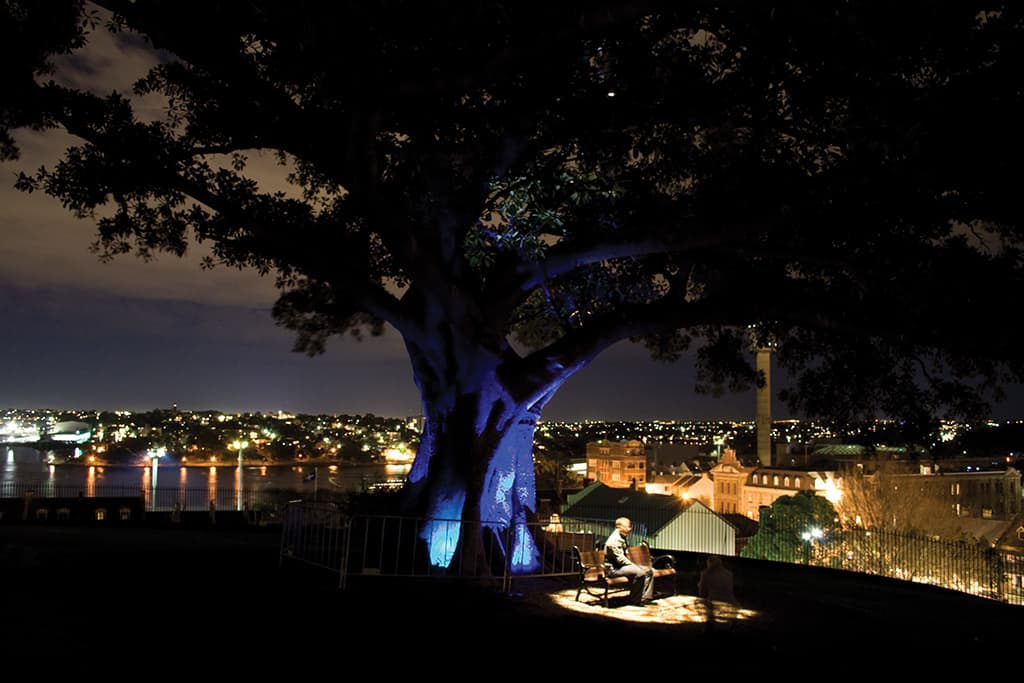
TREE AND BENCH: Reinhard Germer, Fiona Venn, Tim Geary (Australia)
Location: Observatory Hill
While simple in its title, Tree and Bench transformed a usually dark, uninteresting, and mostly deserted by night, location into an eerie and mystical place. The only LED light sources used were both energy efficient, with the whole installation consuming just 285W, while being very visually effective. Individual benches and nearby trees were given a defining glow, bringing them out of the darkness to shine against a backdrop of Sydney.
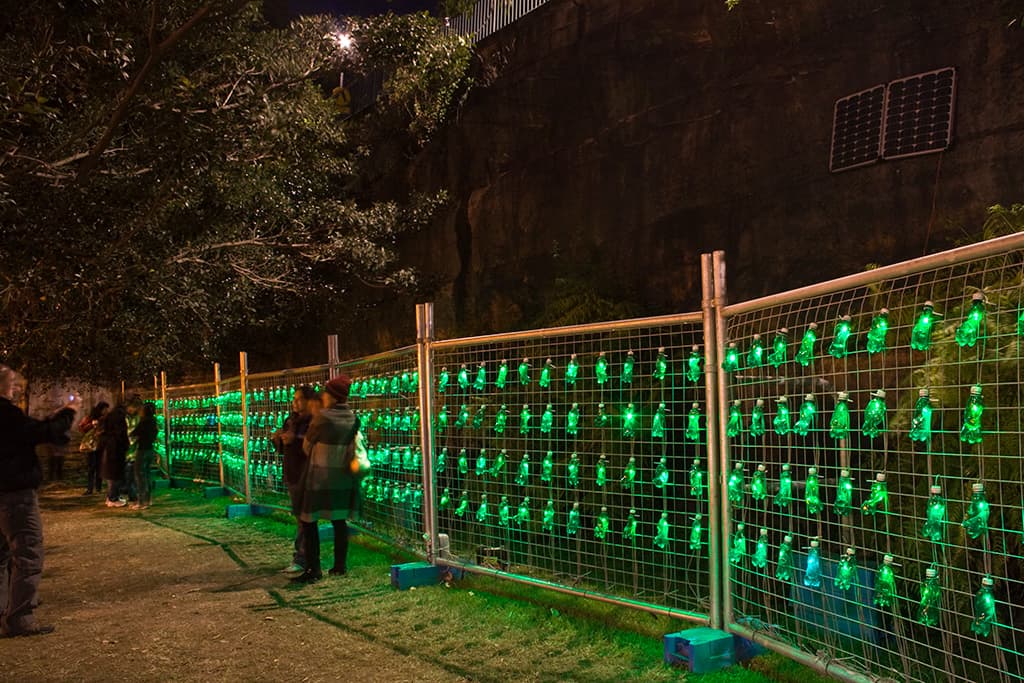
FIRE FLIES: Francesco Mariotti (Switzerland)
Location: Along Argyle St
This sculpture-based work presented an interesting and exciting composite of recycled and reused materials with the modern technology of LED lighting. The hundreds of flashing bottles served to instantly attract the attention of spectators. The energy efficiency of this installation was also impressive, with the entire installation consuming just 75W.
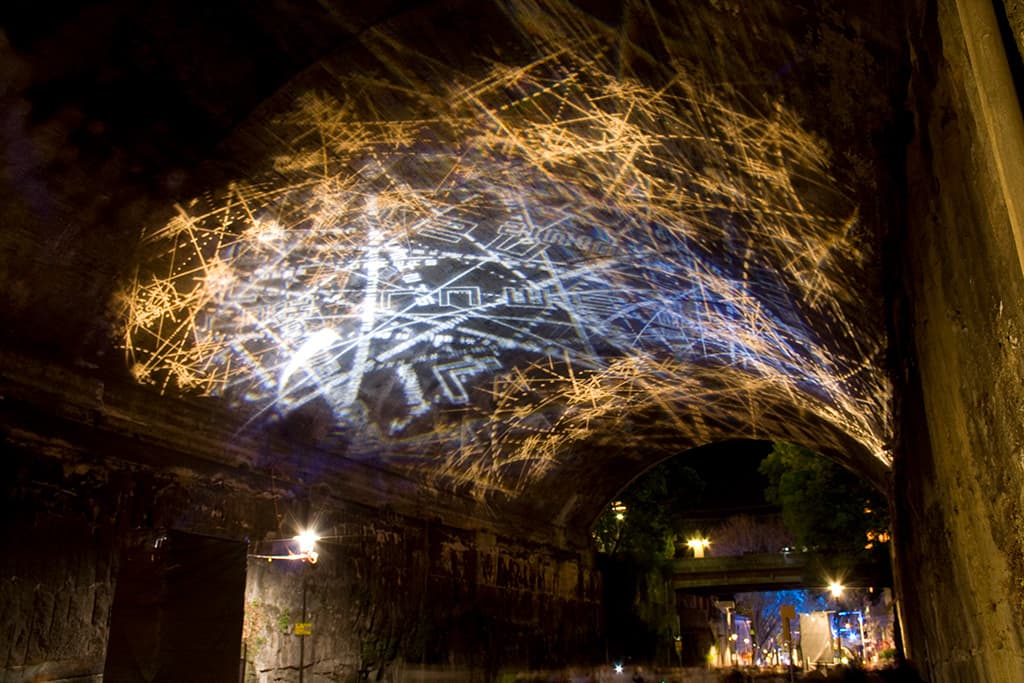
ROCKLIGHTS: Ingo Bracke (Germany)
Location: Argyle Cut
The Argyle Cut, which leads into Sydney’s historic Rocks area, was given a makeover through the use of Selecon Pacific profile spots as projection sources. The curved ceiling of the Cut was enveloped with patterns of light that added a mysterious quality to the space.
HORIZON: Flynn Talbot (Australia)
Location: 72 Erskine St
The few passers-by that were brave enough to explore the touch-panel controls on the window of this lightwall installation were greeted with a selection of colours which dynamically controlled the light output of the installation. The installation consisted of a grid of Color Kinetics iColor Cove EC LED fixtures, controlled by a Pharos LPC architectural lighting controller.

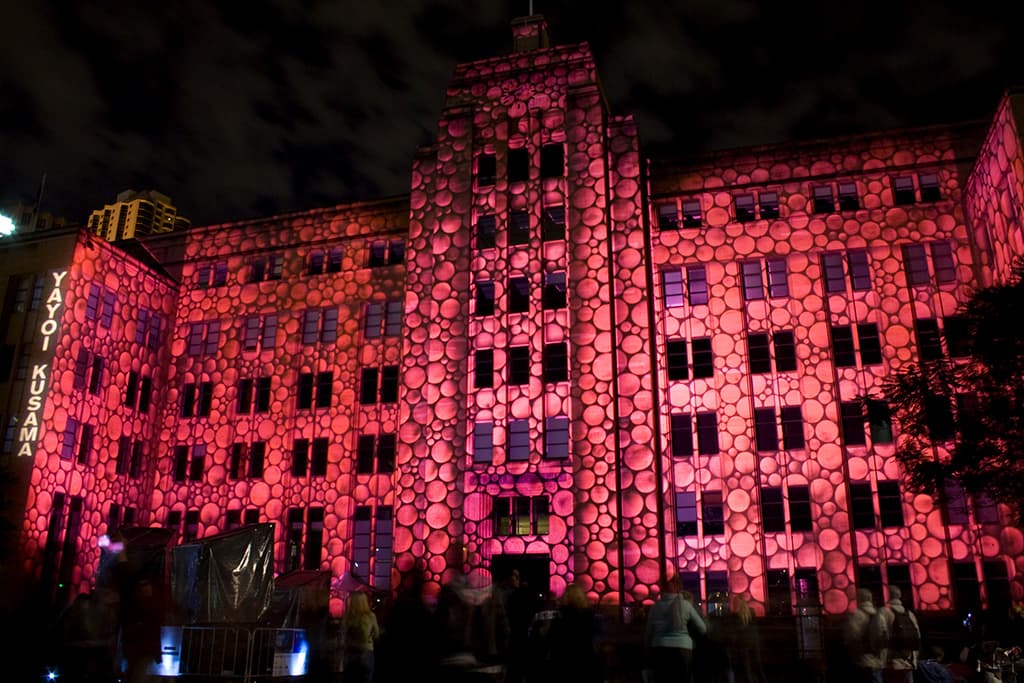
FAÇADE: The Electric Canvas
Location: Museum of Contemporary Art
The Electric Canvas, a company well known for their large scale projection work on major events right across Asia, has once again delivered, this time as a complete overlay on the already imposing facade of the Museum of Contemporary Art. Large scale Xenon-powered E/T/C PIGI projectors were paired with carefully drawn artistic images and animations which perfectly matched the scale of the architecture of the building, to provide a completely seamless image. Several artworks from Japanese artist, Yayoi Kusama were adapted for projection, in addition to five other designs created by Electric Canvas. These works were cycled through on a timer, to constantly wow the admiring audience.

RAINBOW: Mark Hammer, Andre Kecskes (Australia)
Location: Outside Billich Gallery
While many would consider this installation technically quite simple, the use of constantly-changing rich, vibrant colours clearly attracted attention. Hordes of people constantly crowded around, to take photos, or just to get a better look at this dynamic light show. The effect was achieved while consuming only 20% of the power used by a standard incandescent lamp. The installation was a collaboration between highly-experienced lighting designer, Mark Hammer and system designer and project manager, Andre Kecskes.
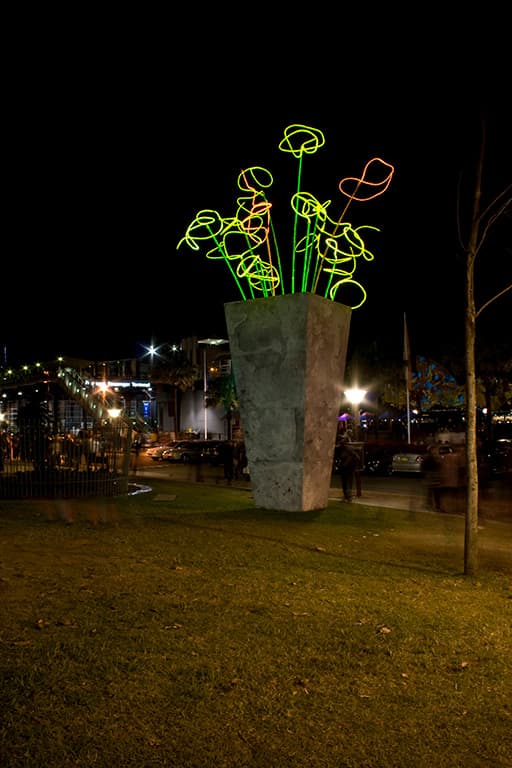
VESSEL OF (HORTI) CULTURAL PLENTY: Warren Langley (Australia)
Location: Cadman Park
Fibre optic technology allowed this installation to adapt to changing ambient light levels, and as a result, it was able to operate 24 hours per day. This installation used three fibre illuminators consuming a total of 450W to light up some 200m of fibre optic cable sprouting from a pedestal high above the heads of passers-by.















RESPONSES